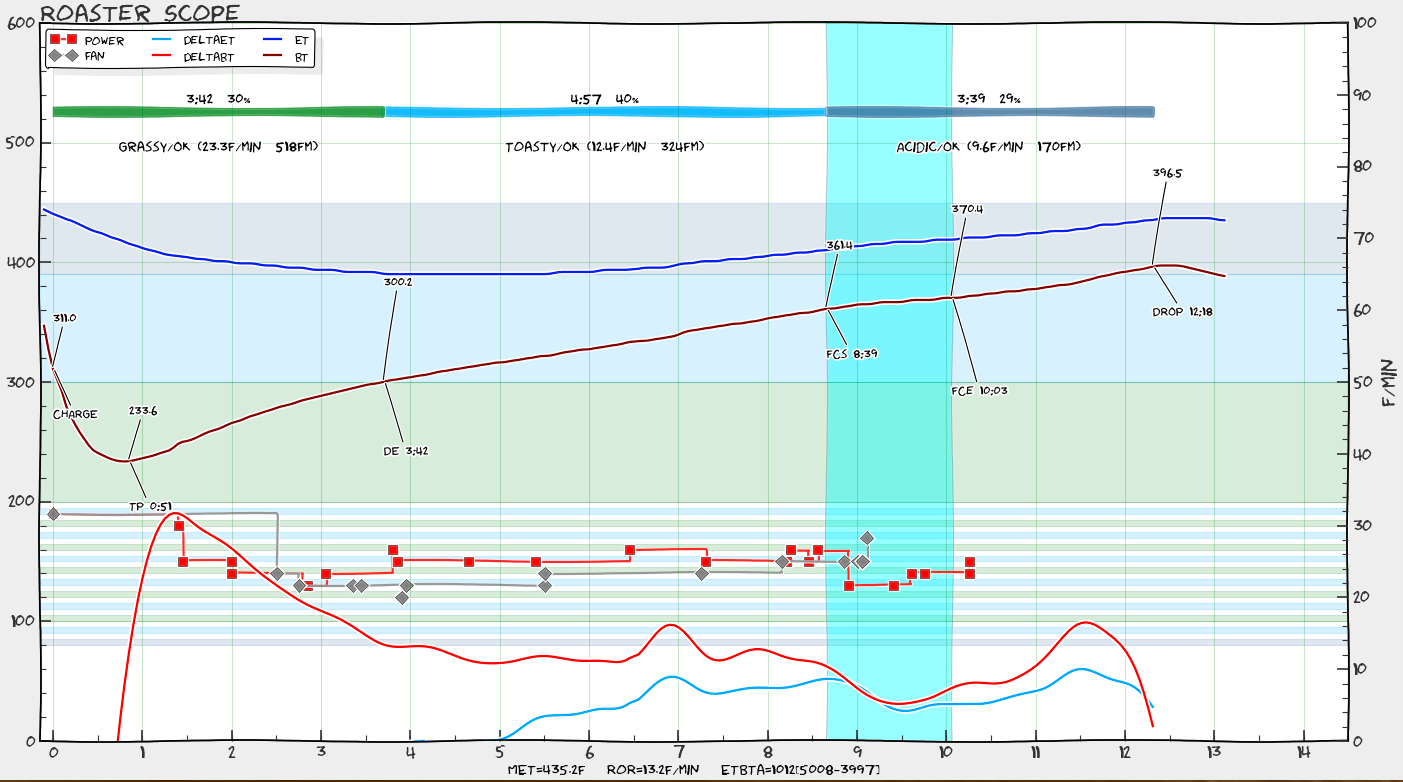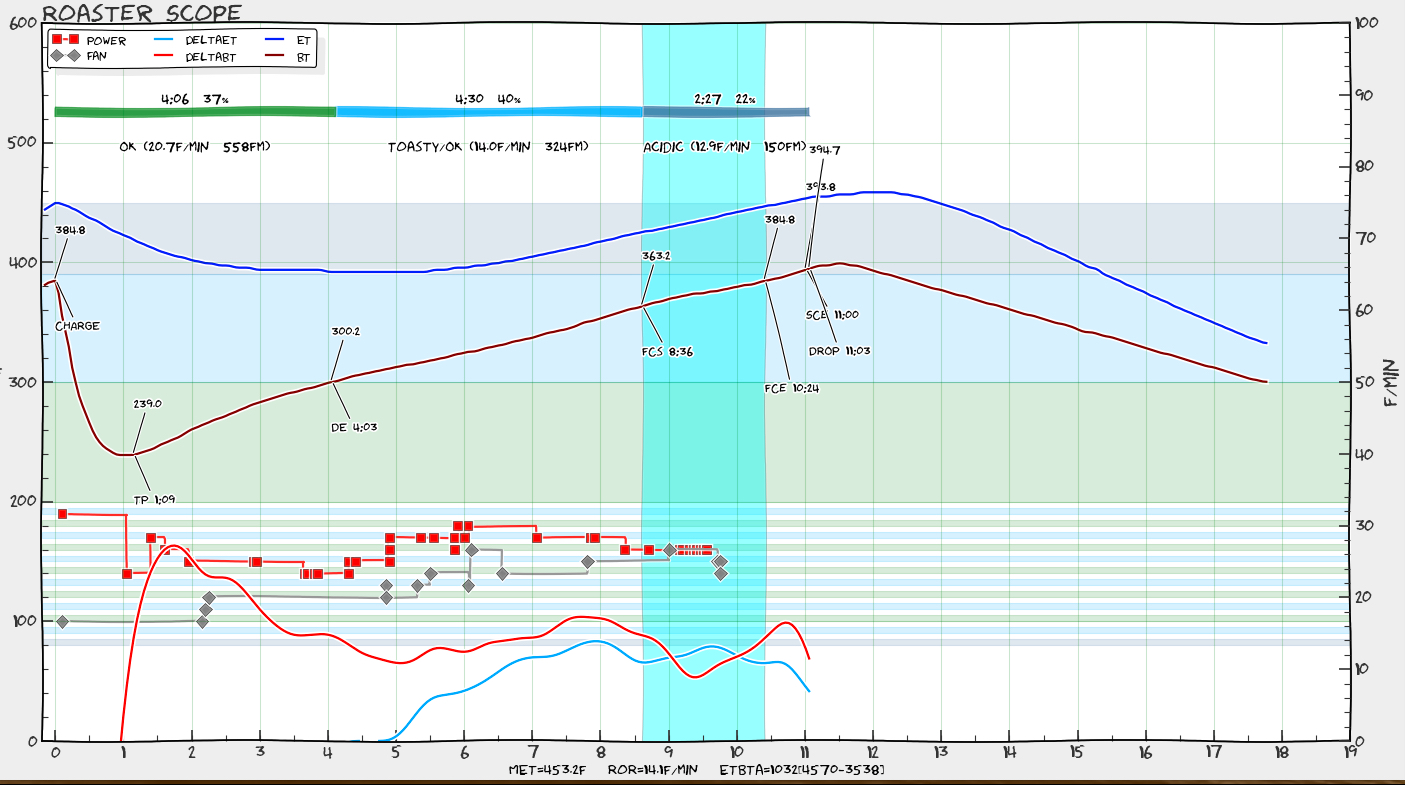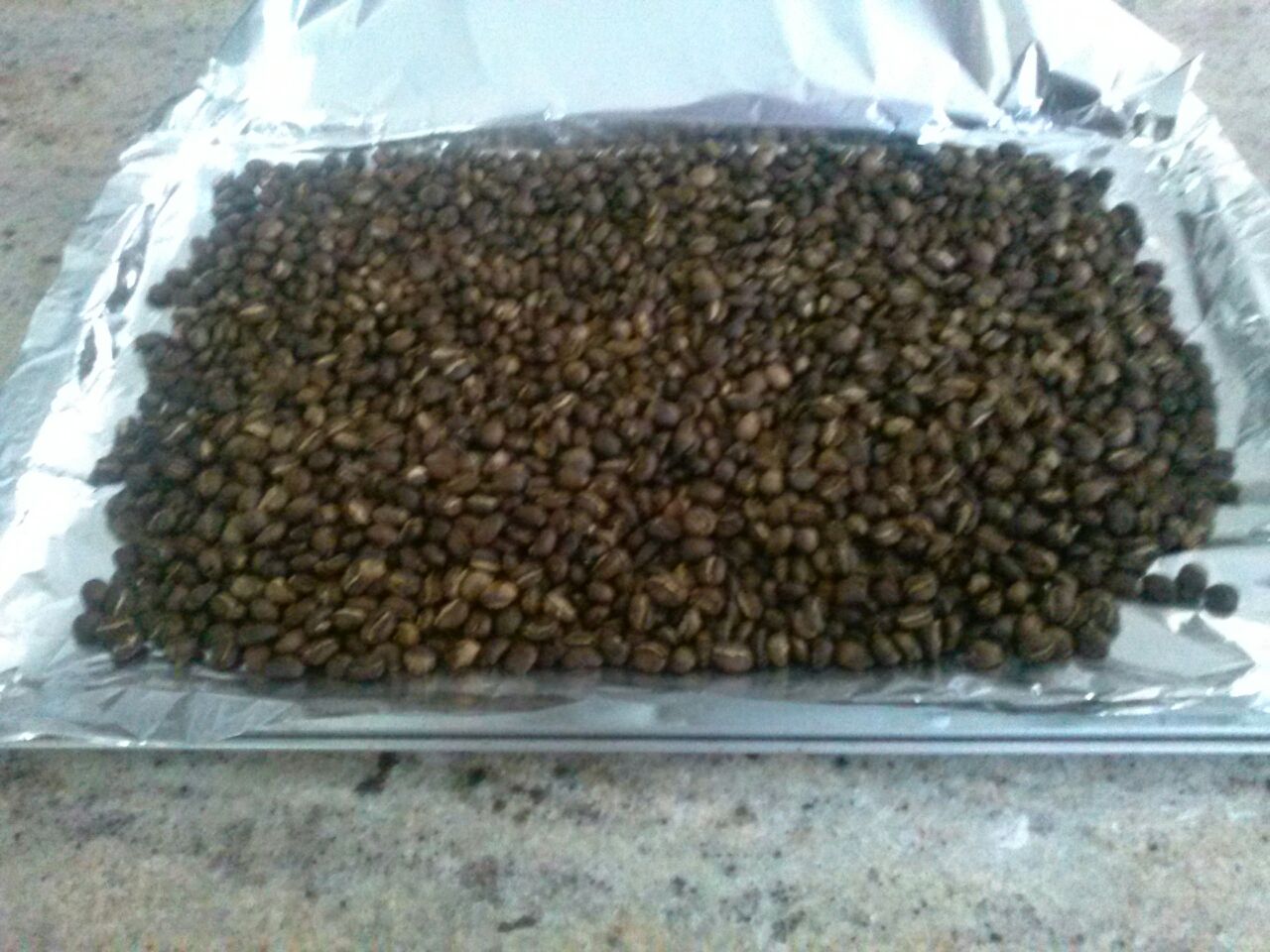@trickydick - I do charge anywhere from 435-450 BT. This can be viewed as a reflection of thermal energy stored in the drum of my roaster. I crank the heat right around the turn so that it "kicks in" after drying to propel the beans through the tanning phase. Keep in my electric roasters have lag so the ET you're seeing is 30-60 after adjusting settings.
With your hottop, you have a perforated drum. Due to the lowered drum mass and direct view of the heat source, your roaster is going to behave differently. One advantage you have over my Quest is radiant heat. This can work serious magic on some beans. The quest is largely reliant on conductive heat, which can be very tricky to manage.
Convective heat is the missing link in both of our systems and really only truly available in gas machines. Someday....
Can someone please talk me out of this shiny new brewer? The sweet spot on it is just the right size for my daily brew for 2. Finger is on the trigger....
https://www.sweetmarias.com/store/brewing/coffee-brewers/filtercones/kalita-wave-steel-dripper.html
Thanks! From the looks of the ET probe, it seemed that heat dropped after the turn... if you're already at 100% for the preheat, how can you crank the heat any more after the turn? Anyway, I think what is probably better advice for me is to try and hit times and temps: drying (300º), 1C begin, 1C end, dump(393-400) consistently. I've still not been able to get that awesome flavor like I had at the Blue Bottle pour-over Burundi. I think was a light roast with tons of floral and fruit and acidity and little on the caramel chocolate end, but was also sweetish. I got lots to learn. Speaking of which...
Tonight I decided to re-evaluate my grind settings and with my nifty TDS% meter (ya. I got a a real one for better or worse) measure my extraction, and evaluate the coffee maker I'm using. Its a Technivorm Clement Design (CD) Moccamaster about 5 or 6 years old now. So since I started home roasting, I thought I try the Tom method suggested at SM's for this brewer. 57g to 1 L ( a little on the low end of the brewing ratio I might add), pause the release using the switch stir when full then open.... well my machine is different than Tom's. no pause switch. You can manually pause by removing the pot though, and this occasionally (often) makes a mess. I picked up a 1.5 # bag of (BLECH!) 8 AM coffee at the grocery store today. label at bottom said best if used by 2/2016 LOL! I precisely measured all beans and water to ensure accurate and consistent brewing ratio 1:17 (58.8g coffee to 1L water). I measured the beans with a 100g digital scale with hundreths resolution. THe water with a pyrex volumetric flask +/- 0.3 ml (but would've been cheaper to use a digital scale and weigh the water, just cooler and easier by a tad to use the flask and I get to feel like Walter White a bit doing so.) Before starting I did a bare run to test the water in-water out. There is a phantom 17grams of water unaccountable from the first run. A second bare run was missing 12 grams of water. odd. I wonder if this means I should add 17 grams to my first pot of the day to account for this "Angel's share" of water missing.
Anyways, first off I measure the coffee ground bed in the filter. 7cm at the 1:17 ratio. optimal is 2-5cm from what I've read. Brewing/contact time in nearly all cases was under 5 minutes often low 4 minute range. I'm not entirely sure when to stop timing- after the last of the water has entered the filter basket or after the last of the water has drained into the pot. Likewise also on the beginning of the brewing - when first drops hit the grounds or when first drops enter the pot. At any rate, since I'm measuring the extraction, I suppose time of contact might be moot - however the character of the coffee could be different as larger particles apparently extract more slowly than the smaller particles... but I digress again. I evaluated the "grain" bed of grounds after each pot. I brewed like 8 pots and sampled them all . Yes this 8 AM is rather gross, yet superior to Dunkin Donuts. I sipped at each so I'll likely be up for hours now...
On to the extraction data:
So for the most part, Very similar data. Taste, well it was all rather bad coffee. Not much going on there, but a couple were a bit smoother than others as I will point out.
pot - tds - ext - notes
1 1.38% 21.27% concave bed
2 1.32% 20.44% coarse adjusted grind. Tried stirring slurry but drained too quickly
3 1.42% 21.53% adjusted grind on fine adjust guess its not that fine after all. concave bed. Shook basket instead of trying to stir at very end.
4 1.40% 21.53% Same as previous but without shaking - concave
5 1.49% 22.96% As previous but with colder water temp (59º vs 77º)added to brewer. concave bed.
6 1.37% 21.14% As previous but with even colder water (47º)- worst concave bed yet. Also adjust fine grind setting -4 towards more coarse, 1+ from pot 2. concave bed
7 1.26% 19.62% As previous but standard water temp (77º). Stand and stir once water filled basket before placing carafe below drip basket - concave bed. Arguably the smoothest tasting but lackluster.
8 1.45% 21.73%* Same as previous but also stirred during the drawdown once carafe was replaced. flat bed, slower run-off at end of cycle. Perhaps best overall flavor, but palate fatigue may have set in by now.
* means that I spilled some coffee when replacing the carafe below the filter basket as it overflowed around the drain hole on the lid. the overall extraction % is inaccurate, and could be higher up to 22.4% or a bit lower as low as 21.22%
Well what was the point of all this? Well, I was seeing really really high TDS% readings on my home roast coffee (1.60-1.75%) and some unpleasant bitterness which I suspect was from inconsistent brewing techniques and grind being too fine (but not by much). I wanted to see what a commercial roasted coffee would measure at when carefully measured . I will say that while for now, I don't think have the meter makes me better at brewing or roasting coffee, and leads to some fanatical measuring tests like this, but it did make me aware of the difficulty in brewing awesome coffee. the tolerance and precision needed to consistently hit specific extraction % is staggeringly difficult.
I think I will now see how my home roast coffee tastes after I've adjusted the grinder to a more coarse setting, and try the steep/drip thing to ensure saturated and evenly extracted grounds. A concave or central crater in the coffee ground bed is a sign that I am getting uneven extraction across the coffee bed. Temps are good, but ground/bed depth is suboptimal and there is consistent concavity unless I manipulate which often leads to a mess. I wonder if a finer grind might remedy if I use a lower brewing ratio. I am considering buying a different brewer to remedy but not sure which might be worthy of consideration. My ideal machine would have ability to brew 1L at proper temp with far better uniformity of extraction with even dispersion of the brewing water (this I suspect is the most alarming issue with the Technivorm CD MM - uneven dispersal of the brewing water over the grain bed). I suppose one other thing I COULD try, is finer grind to slow the speed of brewing as as the water passes through the bed of grounds, but would probably lead to overextraction. Brewing 1L is important to me. My machine cannot adjust rate of flow or outlet temp, nor can it apply a pre-wet. Altering the input water temp seems to have very little effect upon the resulting speed of brewing, the shape of the grounds bed, and no predictable effect on the extraction as a function of brewing water temp from the two low temp pots I brewed (one was higher TDS, the other lower)....
Well, it seems the caffeine has started to wear off a bit, and its getting late, and I've rambled on long enough already....
TD



















































![Craft A Brew - Safale BE-256 Yeast - Fermentis - Belgian Ale Dry Yeast - For Belgian & Strong Ales - Ingredients for Home Brewing - Beer Making Supplies - [3 Pack]](https://m.media-amazon.com/images/I/51bcKEwQmWL._SL500_.jpg)








